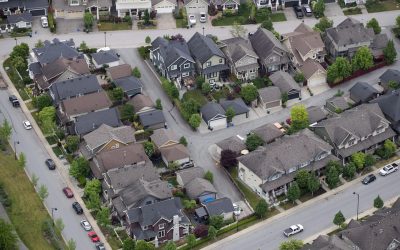Urban life realizes environmental ideals. The city resident drives less, burns less home heating fuel, more often patronizes neighbourhood establishments and more often consumes locally made products, all the while producing more wealth using fewer resources. To live lightly on the land, it’s best to look to the urban village.
Yet environmentalists, failing to understand the underlying causes of despoliation, have traditionally blamed the city, sometimes disquietingly so. As David Suzuki put it: “We can’t eradicate cities. Nor would we want to. But we must recognize that cities disconnect us from nature and each other. They exist by draining resources from the planet while spreading toxic materials and debris. And if we regard all living things on Earth as an immense supra-organism (which some have called Gaia), then cities must be seen as the Gaian equivalent of cancer.”
Now the Green Party of Ontario has broken ranks with this old-style environmental thinking. In a refreshing set of policies released last week, the Green Party unveiled a pro-development agenda “to drive new construction and the province-wide redesign of existing sprawl toward ‘downtown-style’ communities.” The Green Party wants to turn virtually every empty urban lot into one with a building, virtually every under-developed lot into one with bigger and better buildings. The goal: high-density communities that make “efficient and intensive use of land.” The Green Party rightly recognizes that suburban sprawl is expensive while infilling cities is not, and rightly attempts to deal with the root causes that prevent sensible outcomes from occurring.
The Green Party would redesign society by changing the way the property tax works. Many, if not most, economists in the field have argued for the abolishment of this most retrograde of taxes because of its inequities. In the case of sprawl, the property tax acts to discourage high-density cities by especially taxing downtown properties — typically the most highly prized properties and thus the most expensive. In effect, the property tax is a tax on density, with the tax diminishing with the distance from the central city. This tax encourages the development of suburban and rural lands, and creates the sprawl that so many abhor.
But while the Green Party has correctly identified the property tax as a source of unenvironmental development, the reform that it proposes would backfire. Rather than abolish the property tax, which now applies to both land and buildings, the Green Party would revamp it to base it entirely, or almost entirely, on the value of land alone. By removing the tax on buildings, it reasons, people and industries will not be punished when they add an addition to their home, or build a higher office tower. The Green Party’s plan is designed to be revenue neutral — every dollar that municipalities lose from the exemption on buildings would be recovered from the extra taxes heaped on land.
The plan to remove the property tax on buildings is sensible, but transferring it to a property tax on land would only magnify the extent to which city land is overtaxed. Buildings have about the same value whether they are located in cities or suburbs — it is the value of the land under them that varies greatly, and leads to great disparities in property tax. With the tax on buildings transferred to land, the gap between the tax on an urban lot and a suburban lot would increase. A developer, presented with the choice of building on an inexpensively taxed lot or one with sky-high taxes, would tilt even more toward building outside cities than now.
If the property tax must be kept, it would be fairer to eliminate the tax on land and tax only the buildings — that way, the tax would at least have some relation to the cost of service, since larger buildings would tend to require more service than smaller ones. But the fairest system — and the one most beneficial to the environment — would replace the property tax with user fees, to have property owners fully bear the cost of the services they require. The effect would be to discourage sprawling, low-density developments, which tend to be costly to service, and widen the economic advantages of urban developments. Downtown properties would end up paying much less in user fees than they had in property taxes. Developers would avoid unserviced rural lands and overwhelmingly prefer to infill urbanized areas, as the Green Party desires. The country would remain country. The city would be compact and prosperous, and greener, than ever.
Lawrence Solomon, author of the forthcoming book Toronto Sprawls, is executive director of Urban Renaissance Institute and Consumer Policy Institute, divisions of Energy Probe Research Foundation.; www.Urban-Renaissance.org
© National Post 2005


